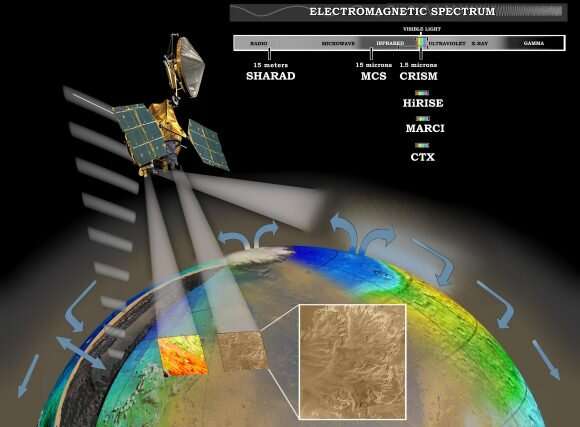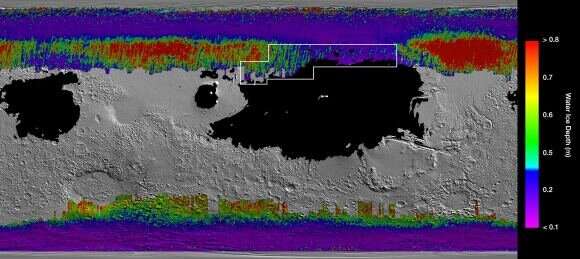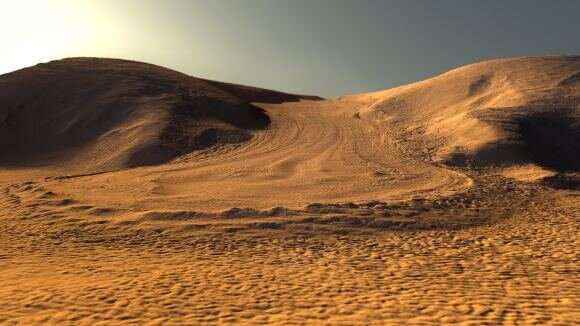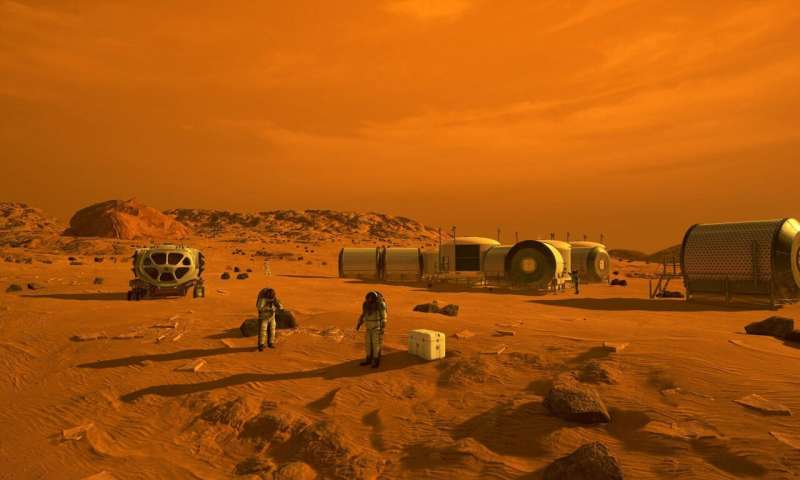Is There Ice on Mars?
Speculation about the existence of ice on Mars goes back centuries but remained uncertain until NASA's Viking missions became the second and third missions to land on Mars in the 1970s. These noted the presence of atmospheric water vapor and glacier-like features, which included widespread ripples and accumulations of unconsolidated material (moraines).

These features are commonly associated with glacial landscapes here on Earth. Since it was not yet confirmed that Mars once had water on its surface, the scientific community cautiously referred to these features as "viscous flow features." And since exposed water ice sublimates on Mars from the low air pressure and exposure to solar radiation, researchers conjectured that these glaciers would need to be protected by a thick layer of regolith.
By 2002, sensor data obtained by the Mars Odyssey orbiter confirmed the presence of subsurface water ice in the mid-latitudes region of Mars. These findings were confirmed in 2008 by the Phoenix Lander, which noted the presence of subsurface water ice in the northern arctic plain. Then came the Mars Reconnaissance Orbiter (MRO), which detected abundant subterranean water ice beneath the flat plains of Arcadia Planitia.
The MRO's ground-penetrating radar indicated that this ice extended from the surface (under a layer of dust and debris) downward to a depth of 38 meters (~125 ft). Data provided by these and other missions have accumulated data that has allowed scientists to map, catalog, and categorize thousands of features that are likely the result of glacier activity.
Glaciers in the Region
For the sake of their study, Hibbard and her colleagues mapped out dozens of surface features in Arcadia Planitia, looking for these same kinds of "sinuous features." In the process, they found ripples and furrows in valleys and on hillsides, which are typical wherever ice flowed downhill. However, Hubbard and her team also found these features in a flat-lying region of Arcadia Planitia that was isolated from any bluffs or slopes.

This left only one possibility, which is that glaciers once flowed across these flat areas of the surface as well. As Hibbard explained in an interview with GlacierHub:
"Finding possible flow features in this flat-lying region was very exciting. Previous studies have suggested there is a buried ice sheet at our study site, and our evidence of channelized ice within this ice sheet indicates that there are more complex glacial dynamics at hand on Mars."
To determine what would make this ice sheet flow, Hibbard and her team compared the flow features of Arcadia Planitia to similar features found in Antarctica's ice streams—where regions in the flat ice sheet move faster than their surroundings. While researchers do not know the exact cause of these ice streams, they have inferred that it could be due to a combination of subsurface topography and melting at the bottom of the ice sheet.
In the case of Arcadia Planitia, the ice sheet has stopped flowing since and become a stagnant ice stream, accumulating a thicker layer of surface debris. These unique characteristics present an important possibility for future crewed missions to Mars. In short, could this water ice be extracted for the sake of human consumption?

Human-Rated Missions
Whereas most glaciers on Mars and their subsurface ice are located near bluffs and on slopes, the Arcadia Planitia glacier forms a temperate flat ice sheet that is near to the surface. What's more, there are few geographical hazards to contend with (such as surface boulders and debris), which makes it both an ideal landing site and a good spot for in-situ resource utilization (ISRU) during future human missions.
This sets it apart from glacial patches that are closer to the polar regions, which are easily accessible, but which are extremely cold compared to the mid-latitudes. As Germán Martínez, a staff scientist at the Lunar and Planetary Institute (LPI), said in a statement to GlacierHub:
"n general, it's more feasible to go to low and mid latitudes, where temperatures are milder and solar energy is available throughout the year … in these mid and low latitudes, though, water ice is typically deeper in the subsurface than in polar latitudes."
What's more, the Arcadian ice investigated by Hibbard and her colleagues may actually be more easily accessible than other known water ice deposits at mid-Martian latitudes. So if and when crewed missions become a regular occurrence on Mars, this ice may prove indispensable to astronauts and their habitats, providing everything from drinking and irrigation water to the raw material for manufacturing fuel.
In time, the subsurface glacier may be tapped for an even more ambitious purpose—like the terraforming of Mars! If Mars is ever to become a warmer and wetter planet (as it was billions of years ago), then subsurface ice deposits like this one will be absolutely essential to the transition.
Explore further



